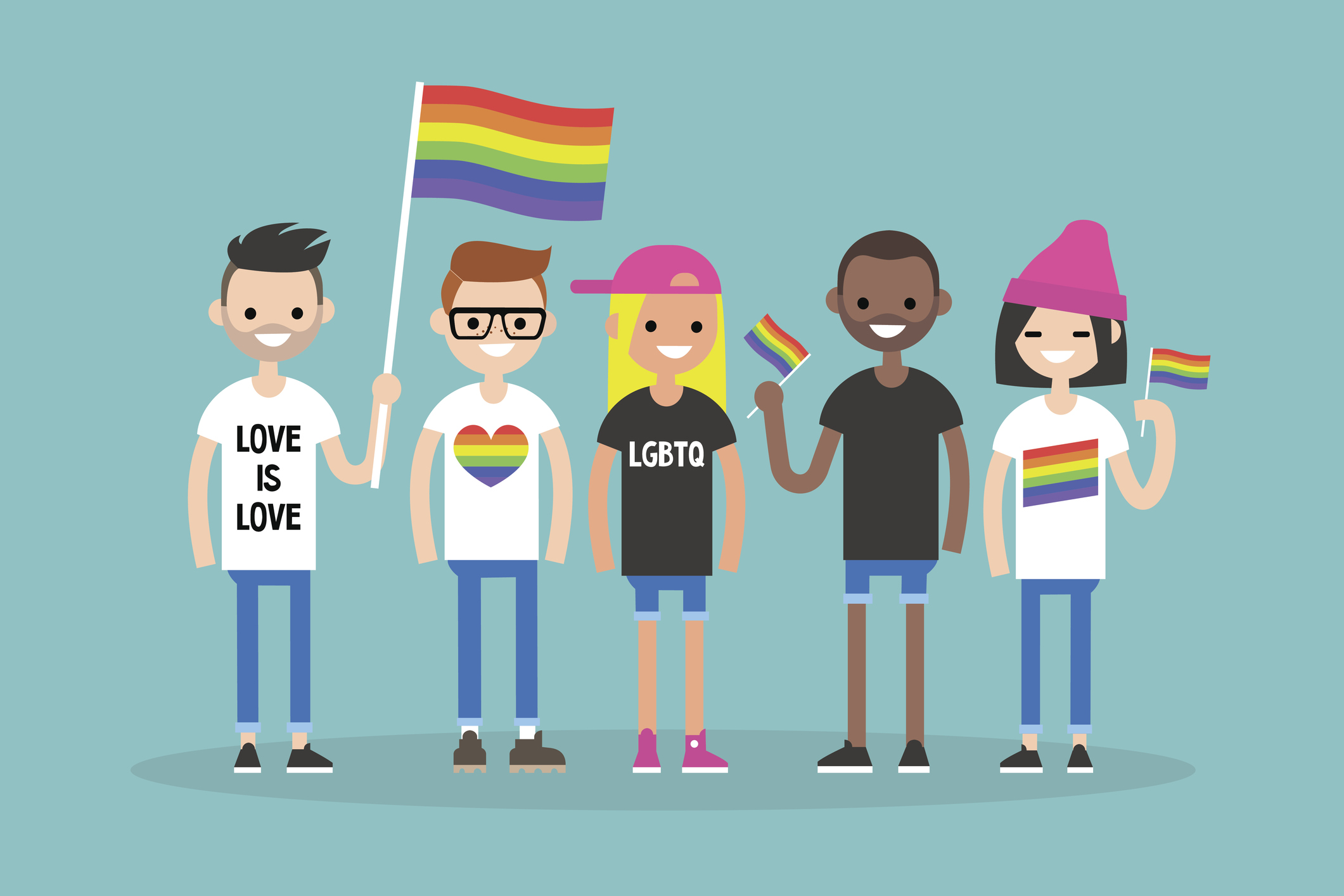
How LGBT Customers Became the Most Undervalued Economy in the World
The global LGBT community would have the 4th-largest GDP in the world if it were a country. Why has it been so overlooked as an economic demographic?
In 2016, the U.S. Treasury department revealed that same-sex (male) couples have an average household income of $176,000, roughly $63,000 more than opposite-sex couples. Lesbian couples earn $11,000 more than opposite-sex couples, confirming that there is some truth to the age-old myth that gays, particularly gay (cisgender, white) men, have disposable income. Additionally, gay couples are less likely to have to children, which to put candidly, are money-suckers.
In fact, if the LGBT community were a country, it would be the world’s fourth-largest economy in the world, with a GDP of $4.6 trillion.
Yet, except for a few markets, particularly those relating to arts, fashion, liquor, culture, and travel, the vast majority of companies are yet to harness the immense buying power of the LGBTQ community.
We spoke with a couple of successful LGBTQ entrepreneurs to help understand why this is the case, how this is problematic, and what can be done to better harness the power of the pink economy.
Daniel Saynt is an award-winning marketer, public speaker, and trend forecaster who’s remained at the forefront of social media and influencer marketing for luxury brands. He’s the founder of the NSFW Agency, a digital agency that specializes in content development and partnering brands to sexual wellness and cannabis influencers. He’s also the founder of Socialyte, a digital influencer representation and casting agency, which has worked with over 200 brands. Previously, he was the owner and chief innovator at NYLON.
Saynt tells the LGBT Foundation that there is a history of magazines like Esquire, Details, and GQ who targeted specifically gay men with fashion, beauty, and luxury lifestyle brands.
However, “As the openly gay population matured, so did further acceptance and marriage equality. [Since then,] the original marketing target splintered.
“More queer-accepting millennial consumers, families, and those [previously] ignored became more vocal, gaining a larger following on social [media] and more attention from advertisers. Currently, this group is responsible for massive spending power.
“It would be ridiculous,” Saynt continued, “to not pay attention to the emerging queer millennial market.”
Stigma should no longer hold brands back from engaging with the LGBT community
Fear and ignorance have been the main contributors holding back marketers from engaging with the LGBTQ community.
“Most brands were afraid of stigma,” explained Saynt. Now, however, for seemingly the first time in the history of the United States, it behooves companies to support the LGBTQ community: “In the past, supporting gays may have resulted in fewer sales due to consumer boycotts. Now it’s the opposite.”
So what can companies do better?
“Representation is key. We need to see our stories told. We need to see more inclusion in advertising and marketing.”
But a huge part of representation, and what many companies are yet to realize, is that the LGBTQ community is incredibly diverse.
“Brands need to consider personalities outside of their comfort zone. It’s easy for brands to want to work with the white, thin model-type in advertising. There’s less risk there. It’s harder for our clients to see POC, LGBTQ body-positive types as someone they want to represent [with] their brand.”
Jonathan-Joseph Ganjian, the CEO of Creekmouth Commodity & Strategic Consultant, highlighted these issues for the Foundation.
Ganjian explained, “LGBTQ consumers in practice are a case of micro and macroeconomic contradiction.”
While we have the trillion dollar buying power, “so many of us – especially our trans brothers and sisters, particularly of color – visibly struggle with housing or job stability, and live with much higher risk of homelessness or poverty and may not have disposable income parity commensurate with other demographic groups’ purchasing power.”
Become an LGBT Token partner
Not all in the community have been represented, and that’s a costly mistake
Ganjian, whose clients range from international luxury womenswear, premium streetwear brands, cryptocurrency strategies and technology startups, alongside community based HIV charities, medical research foundations, and veterans’ services, believes that non-LGBTQ organizations need to better engage everyone in the LGBTQ community, especially those who do not have disposable income.
“Help the most disadvantaged among us tell their stories, live their truths and build their dreams through the lens of your products or services. Place your leadership who are allies on LGBTQ charitable boards; offset the costs of special events or donor cultivation for our community centers! Show that we’re more than dollars in the bank, but are a community worth investing in. Put your money where your mouth is so that we feel equity, and work to level the playing field for the ones of us who can’t directly support you with dollars.”
“This sort of ally-ship,” he continues, “pays off for everyone in the long run.”
Thus, at the end of the day, the most important thing for companies is to engage all members of the LGBTQ community and help the diverse members of the LGBTQ community achieve more parity. It behooves all companies to do so.
As noted by Saynt, “It’s important to not look at the rise of LGBTQ acceptance as a trend. This isn’t something that’s en vogue today and will be out tomorrow. The community represents real spending power, and it’s only growing.”
For more information about the LGBT Token and its mission, follow us on Twitter or Telegram.
